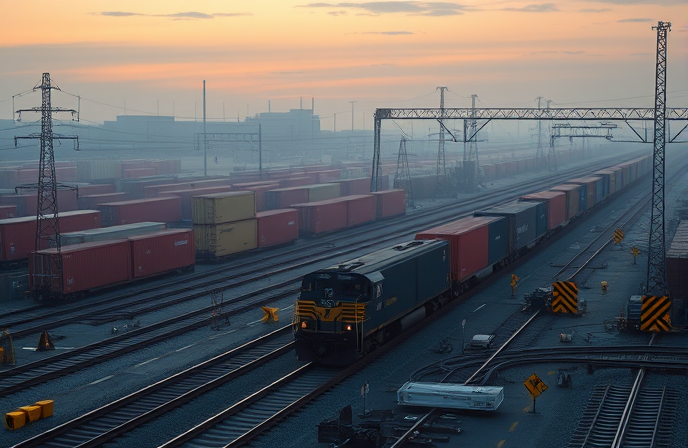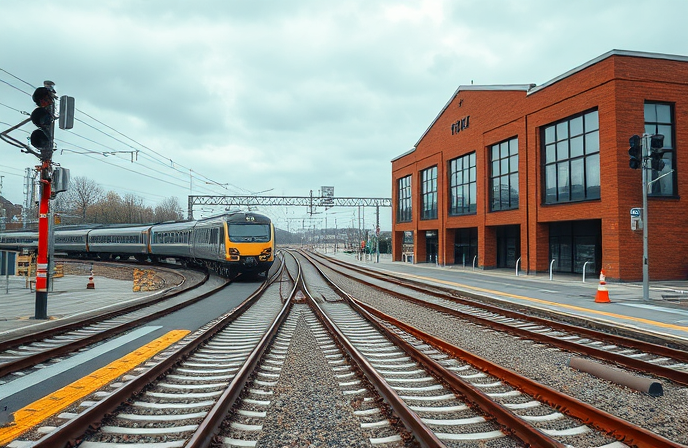CSX Accident: NTSB Findings on Training, Safety Protocols
CSX conductor trainee killed in rail accident. NTSB blames training, rule, and federal guidance deficiencies.

NTSB Cites Training, Rule Deficiencies in Fatal CSX Conductor Accident
The echoes of a tragic accident have once again spurred the railway industry to scrutinize safety protocols. Yesterday, the National Transportation Safety Board (NTSB) released its findings on a 2023 incident involving a CSX conductor trainee, who lost his life after falling from an intermodal rail car and subsequently being struck by the train during a shoving movement. The accident, which occurred during a routine operation, highlights critical gaps in training, operational rules, and federal guidance. This article will delve into the NTSB’s investigation, outlining the contributing factors, and analyzing their implications for the industry, specifically focusing on the critical need for enhanced safety measures and stringent enforcement.
Probable Cause: Unsafe Riding and Lack of Verification
The NTSB’s primary finding attributed the accident’s probable cause to the conductor trainee’s unsafe riding position on the intermodal rail car. Investigations revealed the trainee was sent into the field by CSX without performance-based verification. This allowed the individual to ride the rail car in an unstable position, increasing the likelihood of a slip or fall. The incident underscores the necessity for rigorous pre-field assessments that evaluate an employee’s understanding of and ability to correctly execute the various safety riding practices associated with intermodal rail cars. This includes proper use of safety appliances and maintaining a secure posture during movement.
Deficient Operating Rules: A Significant Contributing Factor
The NTSB’s investigation identified deficiencies in CSX’s operating rules as a contributing factor to the accident. Specifically, the board determined that the existing rules failed to offer adequate protection against the inherent risk of slipping while riding rail cars. This highlights the importance of comprehensive and updated operating manuals that reflect the latest safety research and incorporate best practices for all rail movements. These rules must clearly define safe riding procedures, including mandated use of safety appliances and prohibited actions that could compromise a worker’s stability.
Inadequate Training: A Systemic Shortcoming
The NTSB also scrutinized the quality and comprehensiveness of CSX’s training programs. The investigation revealed that the training provided to the conductor trainee did not sufficiently cover the intricacies of riding intermodal rail cars safely. This training gap includes areas like proper use of handholds, foot placements, and hazard awareness. The findings underscore a broader concern about industry-wide consistency in training. The key to preventing incidents like this is not only to ensure a trainee is fully trained, but also to have ongoing refresher training to ensure employees remain current with the best practices and regulatory updates.
Lack of Research-Based Federal Guidance
Another critical issue highlighted by the NTSB is the absence of research-based federal guidance specific to the safe use of rail-car safety appliances when riding equipment. This absence creates a void, potentially resulting in inconsistent practices across different railway operations. Establishing this guidance would require a collaborative effort involving federal regulators, railway operators, and safety experts. Such guidance should leverage data-driven insights and technological advancements to inform the development of best practices, thereby enhancing worker safety across the railway industry.
Conclusion
The NTSB’s investigation into the fatal CSX conductor accident serves as a stark reminder of the critical importance of robust safety protocols in the railway industry. The findings underscore the need for a multi-pronged approach to prevent future incidents, encompassing rigorous training programs, comprehensive operating rules, and enhanced federal guidance. The industry must prioritize improving training, developing and implementing performance-based verification processes for employees, and continually updating operational procedures to reflect best practices. These crucial steps are paramount for protecting the lives of railway employees and maintaining the overall safety of railway operations. Only through a collective commitment to safety can the industry mitigate risks and safeguard those who dedicate their lives to keeping the railways running safely and efficiently.
Company Summary: CSX Transportation
CSX Transportation (CSX), a leading North American freight transportation company, operates an extensive rail network across the eastern United States and parts of Canada. Specializing in the transportation of a wide range of commodities including coal, chemicals, intermodal containers, and automobiles, CSX plays a crucial role in the nation’s supply chain. Its operations cover approximately 21,000 miles of track, handling a significant volume of freight traffic annually. The company’s commitment to safety, particularly as revealed by the NTSB’s investigation, remains critical for maintaining its operational integrity and building public trust.





